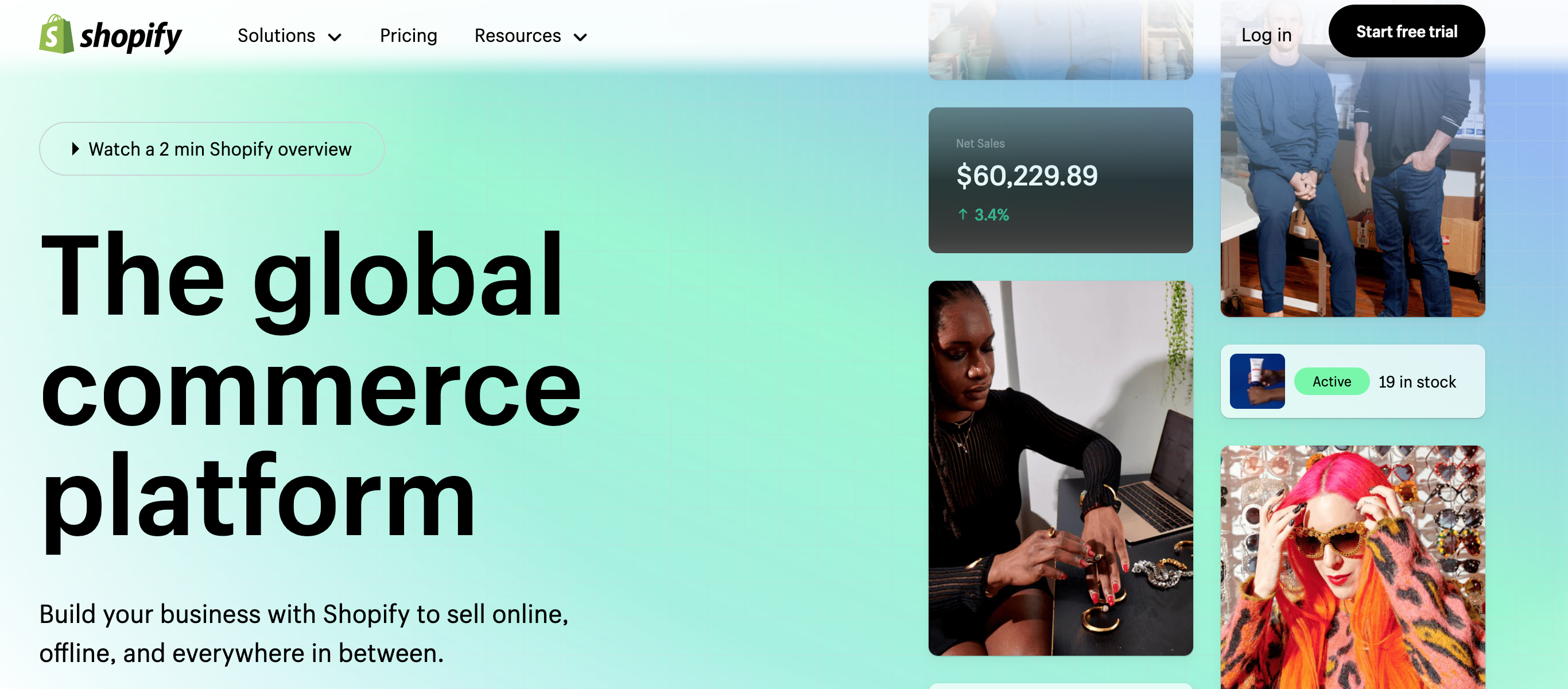The fast pace of technological advancement and its uptake over the recent years have created a myriad of opportunities for entrepreneurs with a penchant for fashion.

If you have ever dreamt of starting a clothing and shoe business, there has never been a more lucrative combination of factors that there is now. This guide will equip you with what you need to get your clothing and shoe business started from the ground up.
Market Research and Target Audience
The first step is always to survey the current market, analyse your competitors (current retailers in the market specialising in clothing and shoes).
Thorough Market Research
Conducting a thorough market research requires you to ask these questions:
- How does the general clothing shoe market look like, overall?
- Is the market big enough for you to carve your own niche profitably?
- Who are your major competitors?
- What are the strengths and weaknesses of your competitors?
- What will be your unique angle into the market?
Part of the market research exercise is to be in a position to answer the questions about general as well as nuanced preferences of your target market segment.
Getting a fine grained grasp of your customer preferences and buying behaviours will help you to tailor your product offerings accordingly.
Develop a Solid Business Plan
Creating a business plan is an important step in your journey to start a clothing and shoe business.
Why do you need a business plan?

You need a business plan for the following reasons:
- To put your business ideas into perspective
- To test the viability and feasibility of your business idea (determine expenses, revenue and profit)
- To define a pricing strategy
- To work out a marketing strategy
- To source funding for your clothing and shoe retail start up
- To continually monitor and evaluate the success and progress of your business
Many entrepreneurs neglect the business planning aspect. However, applying your mind to creating a business will help to see blind spots in your business endeavours, as well as in your business model and concept.
A business plan helps you to craft a unique brand identity, unique selling and value proposition. With a rigorous numbers crunching exercise, a business plan helps you to set realistic plans and goals for your business.
Legal and Regulatory Considerations
Compliance with legal instruments and bodies is crucial for running a compliant clothing and shoe and business. The first thing is to come up with a business name and then get this registered so that your business can be a legal juristic entity.
You can register this as a sole proprietorship or an, LLC, or whatever else is more appropriate for your location and situation.
Go a further step and make sure your business is registered for all the necessary permits and licences that relate to selling clothes and shoes. Comply with tax obligations as well as safety regulations.
If you have a market outside your country of location you need to touch base with the customs body in your area to comply with relevant legal instruments and get the necessary licences and permits.
Source Suppliers and Manage Inventory
Now comes the important part of sourcing suppliers and managing inventory. Without inventory, you do not have a clothing and shoe business. You need to conduct a thorough research to identify clothing and shoe suppliers in your area.
Remember that you are not confined to your physical location. You can consider offshore and online wholesalers who can ship products to your location. The key here is to calculate the costs and profitability of relying on an offshore supplier.
Again, this is why a business plan is crucial for assessing the feasibility and viability of each option. Once you have shortlisted a good number of suppliers, you can start making contact and building relations.
You can start doing diligence on the quality of the clothes and shoes that you want to source.
Tips for Sourcing Quality Clothing
When sourcing clothing for your business your need to pay attention to the following:
Fabric Quality: Go for clothes that are made from high quality and comfortable fabrics that are breathable and durable. You won’t go wrong with natural fabrics such as cotton, silk and wool.
Construction and Stitching: Select well-structured garments that have sturdy stitching to ensure the longevity of the apparel and to avoid fraying and unraveling
Design and Fit: To satisfy a diverse range of customers preferences, select clothing with well-designed patterns and sizes that can flatter various body shapes.
Sustainability: The world is becoming more and more environmentally conscious. For this reason, you will do well to select sustainable and eco-friendly clothing options.
Colour Fastness: Select clothing with fast colors that will not fade off quickly after washing.
Wash and Care Instructions: Keep an eye for clear wash and care instructions on your preferred selections. This is important for your customers.
Printing and Embellishments: If the clothes have prints and embellishments ensure that these are applied securely and won’t come off easily.
Remember to keep pace with market and fashion trends so that you can keep a catalogue of clothing that is relevant to your ever evolving and shifting customer preferences.
Tips for Sourcing Quality Shoes
Materials and Craftsmanship: Pay particular attention to materials used in the manufacture of the shoes. Your catalogue must have shoes made from leather and other durable materials. Also pay attention to the stitching and other design and quality details.
Comfort and Fit: Choose shoes that offer comfort and proper support. To cater to a wide range of diverse interests and preferences select shoes that come in different styles, sizes and colors.
Brands and Reputation: Stick with reputable brands with a track record to producing high quality footwear.
Sample Evaluation: From the shortlisted suppliers that you have, you can ask for samples so that you can assess their products for comfort, durability and overall quality. It is important to do this before you place a bulk order.
Sole and Traction: Pay particular attention to the quality and material of the sole. Examine the shoe’s sole for comfort, traction, flexibility and shock absorption. This is particularly important for athletic and outdoor footwear.
Testing and Certification: For specialised and children’s footwear you need to inquire about any necessary safety and quality certifications to ensure compliance.
Don’t Compromise on Quality
Also, be intentional about building strong relations with your suppliers so that you create a steady supply of quality shoes and clothes. You can also leverage good relations with suppliers to get pricing bargains.
Inventory sourcing must be tied to effective inventory management systems and processes so that you avoid stock outs and over stocking.
Establish an Online and Offline Presence
The growth of ecommerce, particularly mobile commerce and social commerce over the past years, indicates that a retail business that has no solid digital presence is missing out on a huge market. If you are selling shoes and clothes, the biggest proportion of your market is online.
Establishing a solid online presence enables you to reach an unlimited audience online beyond the limitations of the market you have access to offline.
To set up a strong online presence you need to register a domain with a reputable platform such as Bluehost. With Bluehost you can register and host a domain for as low as $95.99 per month.
This is the domain that you will then connect with a solid ecommerce platform such as Shopify or BigCommerce, etc.
Choosing the Best Ecommerce Platform for a Clothing and Shoe Business

Shopify is a leading eCommerce platform by measure of market share as well as the range of features and functions.
Shopify has robust inventory management features, over 100 payment gateways options, an expansive app ecosystem that you can leverage to add custom features and functionalities to your online clothing and shoe store.
Shopify also offers a wide range of high and professionally designed themes suited for a clothing and shoe business.
Integrate Your Physical Store with Your eCommerce Store
It’s important to offer a seamless shopping experience for your customers. The best way to do this is to integrate your physical shoe and clothing store with your ecommerce. This bolsters your efforts to reach a wider market.
Below are important steps you need to take to integrate your offline store with your online store.
Sync Inventory Across Offline and Online Stores
Ensure that your physical store’s inventory is accurately synced with your e-commerce store. As stated earlier, implement a robust inventory management system to avoid stock outs and over stocking.
Unified Branding: Maintain a unified branding across your offline and online presence. This means using the same logos, color schemes as well as brand messaging to assert a cohesive clothing and shoe brand.
In-Store Pickup and Returns: Offer your customers a convenient way to choose their items and pay online and come to pick their items in-store.
Showcase In-Store Stock Online: Make use of the online store website to showcase your physical store inventory even if certain items are exclusive to in-store purchases.
Promote Cross-Selling: Cross selling is a great way to direct your physical customers to your online presence and vice versa. You can use in-store signage as well as online pop ups to sensitise shoppers about both offline and online platforms.
Use Social Media Integration: Make use of social media platforms to promote both your physical and online stores. Create and share content to promote products across all channels to reach a wider audience.
The other advantage of robust ecommerce platforms such Shopify is that these platforms have various digital marketing and Search Engine Optimisation (SEO) features and tools to help you grow your online audience.
Marketing your shoe and clothing business is crucial for attracting customers to your business.
There are some offline as well as online strategies you can consider for the promotion of your shoe and clothing business
Ways to Market A Shoe and Clothing Store Offline
To promote your store offline, consider collaborating with complementary brands. For this you can partner with brands that complement your clothing and shoe line to cross promote each other’s products.
You can also organise fashion events in the form of hosting and participating in fashions shows and organising your promotional events. You can also run pop-up shows to showcase your products to live audiences. This will also give your brand significant mileage.
Ways to Market A Shoe and Clothing Store Online
If you have a solid eCommerce presence, you need to leverage that to drive up traffic and boost your sales. Some of the ways you can consider for marketing your clothing and shoe business online are listed below:
Social media marketing: with social media marketing you can run pay per cost adverts to create a buzz around your brand and your products across the vast social media landscape. You do not need to have a strong presence in all the channels.
Try major platforms like Facebook, Instagram and Pinterest (which are great for visuals), and invest more on what works.
Influencer Marketing: Collaborating with influencers is a great way to boost brand awareness. Influencers have vast audiences with some running into millions of followers, through these you can reach a wider audience with your brand. Influencer collaborations also help to boost the credibility of your brand.
You can also consider running Search Engine ads, leverage user generated content (UGC), and various techniques to keep your existing and potential customers engaged, while giving your brand and products maximum mileage.
Growing and Scaling your Clothing and Shoe Business
To grow and scale your clothing and shoe business you need to focus on offering high quality customer service. Leverage feedback mechanisms, and pay attention to reviews and testimonials.
Take complaints seriously and ensure you act on these promptly. Optimise your pricing and sales strategies, keep a tight lid on your finances and cashflow. Make use of Shopify’s inventory management systems to balance your stock volumes and avoid stock outs and overstocking.
If you’ve got the steps that have been detailed above right, you will have a successful launch of your clothing and shoe business. In the medium to long term your clothing and shoe business will grow.
You will then need to consider various ways to scale your business. You scale such a business by considering opening new markets, or increasing your sales volumes and inventory, or even adding new product lines.
In scaling your business, you also need to do the same kind of due diligence as you did in starting the business: assess the potential risks and challenges and develop a solid business growth and scaling strategy.
Clothing Store Equipment List
Below is a basic checklist of equipment that you need to launch your clothing and shoe business.
Display Racks
You need sturdy and versatile display racks suited for showcasing your clothing and shoe products attractively.
Mannequins
You need mannequins of different sizes, shapes and styles to display outfits and help customers visualize how clothing will look on their bodies.
Point of Sale (POS) System
Choose a robust and well mature point of sale (POS) system that seamlessly integrates sales, inventory and customer data.
Clothing Hangers
Get durable and space-saving hangers to keep clothing organized.
Mirrors
Get full length mirrors that customers can use when they are trying clothes on.
Fitting Rooms
You will need to set up comfortable and well-lit fitting rooms for customers to try on clothing.
Security System
Install a security system to protect your physical store from theft and also to ensure a safe shopping environment for your customers.
Cash Register
You will need a reliable cash register to process transactions accurately.
Also consider getting signage and banners to enhance the visibility of your offline store. You should also consider getting storage solutions in the form of shelves and storage units to keep extra inventory for your store.
Final Thoughts
As you may have seen by now, starting a clothing and shoe business is not rocket science. It’s a matter of putting all the pieces of the puzzle together. That said, a lot goes into launching such a business successfully and establishing a vibrant presence both offline and online.
Doing due diligence in your research and business planning phase will ensure that you have a solid foundation you can build on. Starting a clothing and shoe business, any business for that matter, is a journey and not an event. You need to be patient, diligent and resilient to see your dreams come to reality.
The good part is: you are neither alone nor the first to attempt this, as much as your own journey is unique to you, many have gone ahead of you on this path and registered remarkable success. And now it’s your turn.



